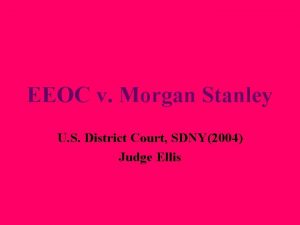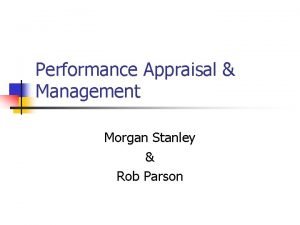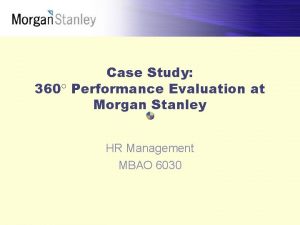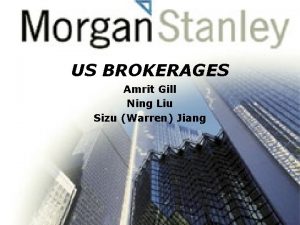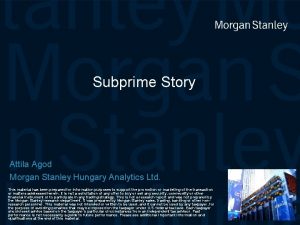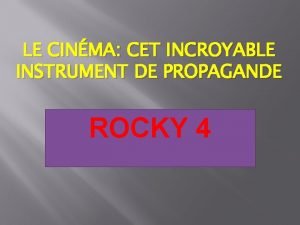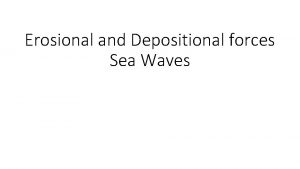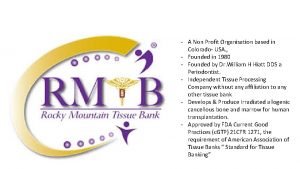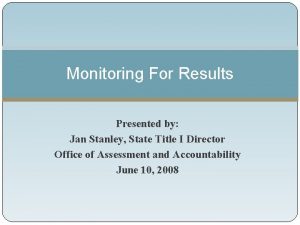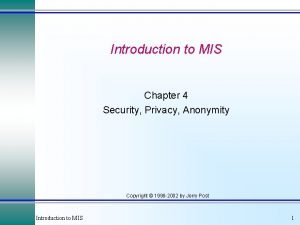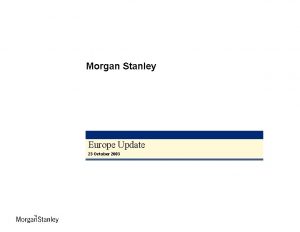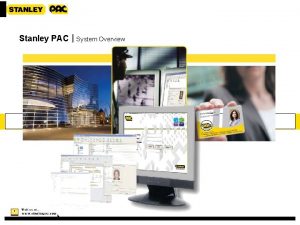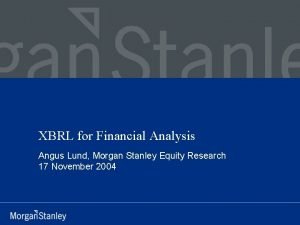MORGAN STANLEY Rocky Shun Ho Zhengyu Lu Nantaka


































































































- Slides: 98

MORGAN STANLEY Rocky Shun Ho Zhengyu Lu Nantaka Vongpiyabovorn Jingxin Wu Zhe Wu

Morgan Stanley • Formed on September 16, 1935 • Formed by J. P Morgan & Co. employees • Henry S. Morgan • Harold Stanley • 1942: Join the New York Stock Exchange • US $779 billion as assets Overview Risk Management Hedging Compensation

Expansion Overview Risk Management Hedging Compensation

Achievement Overview Risk Management Hedging Compensation

Community Overview Risk Management Hedging Compensation

Global Office Operates in 36 countries, over 600 offices and a workforce of over 60, 000 Operates in 36 countries around the world, with over 600 offices and a workforce of over 60, 000 Headquartered in New York City, US Overview Risk Management Hedging Compensation

Balance Sheet Overview Risk Management Hedging Compensation

Balance Sheet Overview Risk Management Hedging Compensation

Asset Level Evaluation

Decompose Assets to Different Levels

Income Statement Overview Risk Management Hedging Compensation

Income Statement

Cash Flow Statement Overview Risk Management Hedging Compensation

Cash Flow Statement Overview Risk Management Hedging Compensation

Three Core Businesses Institutional Securities Global Wealth Management Group Asset Management Capital raising Brokerage and investment advisory services • Investment alternatives Global asset management products and services • Equity • Fixed income • Alternative investments • Hedge funds • Funds of funds • Merchant banking • Real estate • Private equity • Infrastructure Financial advisory services • Mergers and acquisitions • Restructurings • Real estate • Project finance Financial and wealth planning services Corporate lending Sales, trading, financing and market-making activities • In equity and fixed income securities • Related products • Foreign exchange • commodities Benchmark indices and Risk management analytics Annuity and other insurance products Credit and other lending products Cash management services Retirement services Investment activities Trust and fiduciary services Investment activities Overview Risk Management Hedging Compensation

5 -Year Net Annual Revenue Overview Risk Management Hedging Compensation

Business Mix 2008 & 2009 Overview Risk Management Hedging Compensation

Business Segment in 10 -K

Industries • • • Large-Market Investment Banking Financial Services Asset Management Institutional Asset Management Retail Asset Management Investment Banking Overview Risk Management Hedging Compensation

2008: MS and Financial Crisis Overview Risk Management Hedging Compensation

2008: MS and Financial Crisis Overview Risk Management Hedging Compensation

2008: MS and Financial Crisis Overview Risk Management Hedging Compensation

2008: MS and Financial Crisis Overview Risk Management Hedging Compensation

2008: MS and Financial Crisis Overview Risk Management Hedging Compensation

Risk Management Philosophy Based on the following principles • • • Comprehensiveness Independence Accountability Defined risk Tolerance Transparency Overview Risk Management Hedging Compensation

Risk Governance Structure Board of Directors Audit Committee and the Risk Committee of the Board Senior management oversight (including the Chief Executive Officer, the Chief Risk Officer, the Chief Financial Officer, the Chief Legal Officer and the Chief Compliance Officer) Internal Audit Department Independent risk management functions (including the Market Risk Department, Credit Risk Management, the Corporate Treasury Department and the Operational Risk Department) Company control groups (including the Human Resources Department, the Legal and Compliance Division, the Tax Department and the Financial Control Group) Overview Risk Management Hedging Compensation

Risk Committee Oversees • Risk governance structure • Risk management and risk assessment guidelines and policies regarding market, credit and liquidity and funding risk • Risk tolerance • Performance of the Chief Risk Officer Overview Risk Management Hedging Compensation

Types of Risks Operational risk • Risk of losses arising from insufficient controls on people, resources, and processes and external factors such as compliance risk Legal/Regulatory risk • Risk of losses in fines, penalties, damages resulting from noncompliance and legal actions Credit risk • Risk of default from borrowers Overview Risk Management Hedging Compensation

Types of Risks Liquidity and funding risk • Risk of difficulty in accessing capital markets, inability to liquidate assets in a timely manner, and threats to going concern in satisfying financial obligations Market risk • Risk of losses arising from changes in market prices, rates, volatility, and correlations Overview Risk Management Hedging Compensation

Types of Risks Competitive environment risk • Risks from competition International risk • Risks of losses from global operation Acquisition risk • Risk of losses from acquisitions, minority stakes, forming joint ventures, and strategic alliances Overview Risk Management Hedging Compensation

Operating Risk Sources of risk • Increasingly complex and large volume of transactions processed in various markets and currencies • Internal risks from employees and control systems, and external risks from financial intermediaries and other third parties • Terrorist activities, diseases, and natural disasters contingency planning Overview Risk Management Hedging Compensation

Operating Risk Management Operational risk Oversight Committee • Chaired by CRO, provides oversight of operational risk Operational risk manager • Monitors, measures, analyzes and reports on operational risk • Independent of business segments Business Manager • Maintain processes and controls designed to manage operational risk Overview Risk Management Hedging Compensation

Operating Risk Management Business Continuity Management • Contingency planning to ensure continuity of operations in case of disaster External vendors • Risk managed through service level, contractual agreements, service and quality reviews Overview Risk Management Hedging Compensation

Legal Risk Extensive supervision from the Fed and regulatory agencies • Possibly stricter capital requirements and leverage limits coming as soon 2010 Risk related to commodities activities • Engages in production, storage, and transportation of several commodities including metals, agricultural and energy products • Contamination may create liability even if MS is not at fault Overview Risk Management Hedging Compensation

Legal Risk Fiscal and monetary policy • Various policies from central banks have effect on cost of funds for lending, capital raising and investment activities Conflict of interests • Can result in enforcement by governing agencies • Can result in public scrutiny or loss of business Estimation errors • For legal proceedings which involve substantial stake and are in early stages, costs are hard to estimate Overview Risk Management Hedging Compensation

Legal Risk Management Legal and Compliance Division • “Develops various procedures addressing issues such as regulatory capital requirements, sales and trading practices, new products, potential conflicts of interest, structured transactions, use and safekeeping of customer funds and securities, credit granting, money laundering, privacy and recordkeeping” Overview Risk Management Hedging Compensation

Credit Risk Institutional Securities Activities Corporate lending • Relationship-driven – expand business relationships • Event driven – lending commitments for events such as acquisition and mergers by clients Securitized products • Structuring, underwriting, and trading collateralized securities • Risk borrower not performing according to agreement and devaluation of collateral Overview Risk Management Hedging Compensation

Credit Risk Institutional Securities Activities Derivate contracts • Dealer in OTC derivatives • “Generally represent future commitments to swap interest payment streams, exchange currencies, or purchase or sell commodities and other financial instruments on specific terms at specified future dates” Overview Risk Management Hedging Compensation

Credit Risk Global Wealth Management Group Activities Commercial Lending • Working capital lines of credit, revolving lines of credit, standby letters of credit, term loans and commercial real estate mortgages • Involves the use of independent credit agencies Margin Lending • Reviews amount of the loan, the intended purpose, the degree of leverage being employed in the account Overview Risk Management Hedging Compensation

Credit Risk Global Wealth Management Group Activities Consumer Lending • Mortgages, HELOC • Evaluation of capacity and willingness to pay • FICO scores, debt ratios, borrower’s reserves Overview Risk Management Hedging Compensation

Credit Risk Management is responsible for • Evaluating, monitoring and controlling credit risk for each business segment • Ensuring transparency of material credit risks, compliance with established limits, approving material extensions of credit, and communicating with senior management regarding risk concerns Overview Risk Management Hedging Compensation

Analyzing Credit Risk Transactions and creditworthiness of borrowers reviewed regularly At three levels: transaction, counterparty and portfolio Produces credit ratings similar to external services • BB+ below considered non-investment grade Overview Risk Management Hedging Compensation

Analyzing Credit Risk Overview Risk Management Hedging Compensation

Risk Mitigation Through management of key risk elements such as size, seniority and collateral Sell or assign lending commitments to other financial institutions Netting agreements to offset obligations in derivate trading Overview Risk Management Hedging Compensation

Exposure by Country Overview Risk Management Hedging Compensation

Exposure by Industry Overview Risk Management Hedging Compensation

Regulation: Basel II Accord • The First Pillar: Minimum Capital Requirements • Maintain three major risks: Credit Risk, Operational Risk, Market Risk • Minimum Capital Requirement: (risk weighted) 8% • The Second Pillar: Supervisory Review • Assist the first pillar with regulatory responses • Deals with liquidity risk and other risks • The Third Pillar: Market Discipline • Market disclosure Overview Risk Management Hedging Compensation

Basel & Morgan Stanley • Transferred to Financial Holding Company since 2008 • Capital Standard: • Maintain a total capital ratio of 10%, minimum Tier 1 capital ratio is 6% • Currently comply to Basel I, will adjust to Basel II Overview Risk Management Hedging Compensation

Morgan Stanley-Capital Ratio Overview Risk Management Hedging Compensation

Economic Capital-Function • Estimate the amount of equity capital required to support the business over a wide range of market environments while simultaneously satisfying regulatory, rating agency and investor requirements • Continue to evolve over time in response to changes in in business and regulatory environment and to enhance modeling technique • Assign to each business segment and sub-allocate to product lines • Align equity capital with risks in business segments to evaluate return on a risk-adjusted basis Overview Risk Management Hedging Compensation

Economic Capital-Calculation • Regulatory Capital + Additional Capital for Stress Losses • Stress losses include market, credit, business, and operational risks • Economic Capital = Tier 1 Capital + Unallocated Capital Overview Risk Management Hedging Compensation

Regulatory Capital vs. Economic Capital Overview Risk Management Hedging Compensation

Economic Capital-Components Overview Risk Management Hedging Compensation

Economic Capital vs. Risks Overview Risk Management Hedging Compensation

Stress Losses • Stress losses are defined at the 90% to 95% confidence interval in order to capture the worst potential losses in 10 to 20 years • Types of stress losses: • Market: systematic, idiosyncratic (unsystematic) or random risk • Credit: counterparty defaults • Business: earnings volatility • Operational: legal risk Overview Risk Management Hedging Compensation

Risk Factors • Liquidity Risk: risk that is unable to finance its operations due to a loss of access to the capital markets or difficulty in liquidating its assets • Inability to raise fund in the L. T. or S. T. debt capital market / equity capital market • Inability to access the secured lending markets • Inability to control the disruption of the financial market or negative view to the industry • Depends on credit rating • Depends on payment from subsidiaries • Depends on U. S. and international market and economic conditions Overview Risk Management Hedging Compensation

Liquidity Overview Risk Management Hedging Compensation

Liquidity Note explanation Overview Risk Management Hedging Compensation

Equity Capital Management Policy • Theory: Based on business opportunities, capital availability, and rates of return, internal capital policies, regulatory requirements, rating agency guidelines, changing in business needs • Actions: Repurchase $4. 4 billion out of $6 billion Overview Risk Management Hedging Compensation

Economic Capital Overview Risk Management Hedging Compensation

Liquidity Risk Management Policy • Objects: Support the successful execution of the Company’s business strategies while ensuring sufficient liquidity through the business cycle and during periods of stressed market condition • Approaches • Contingency Funding Plan • Liquidity Reserves Overview Risk Management Hedging Compensation

Funding Management Policy • Designed to provide for financings that are executed in a manner that reduces the risk disruption to the company’s operations • Types of holdings • • Secured Financing / Unsecured Financing Short-Term Borrowings Deposits Long-Term Borrowings Overview Risk Management Hedging Compensation

Credit Ratings Overview Risk Management Hedging Compensation

Off-Balance Sheet Arrangements with Unconsolidated Entities • Institutional Securities Activities: Commercial and residential mortgage loans, CMOs, corporate bonds and loans, municipal bonds • Guarantees: Overview Risk Management Hedging Compensation

Commitment and Contractual Obligations

Risk Factors • Market Risk: risk that a change in the level of one or more market prices or other market factors, which result in losses for a position or portfolio • Affected by market fluctuations and by economic and other (political, availability and cost of capital, liquidity of global markets, level of volatility of prices…) • Affected by the volatile and illiquid market conditions • Affected by holding large and concentrated position • Affected by the real estate sector Overview Risk Management Hedging Compensation

Market Risk • Actions • Monitor the Company’s risk against limits on aggregate risk exposures • Perform a variety of risk analyses • Routinely report risk summaries • Maintain the Company’s Va. R system • Approaches • Diversification of risk exposures • Hedging • Va. R and Sensitivity Analysis Overview Risk Management Hedging Compensation

Va. R: Benefits and Shortcomings • Benefits: • Takes into account linear and nonlinear risk exposures • Capture correlation risks and basis risks / capture name specific risk (Monte Carlo Simulation) • Response to the change in the composition of trading portfolios • Estimate aggregate risk exposures • Reflect risk reduction due to diversification & hedging Overview Risk Management Hedging Compensation

Va. R: Benefits and Shortcomings • Limitations: • Past changes in market may not yield accurate prediction • Changes in portfolio regarding market movement may differ from the model • Time horizon not capture market risk position • Historical data may only provide limited insight • Future risk depends on future position Overview Risk Management Hedging Compensation

Va. R 2009 The Va. R increases for 2009 were primarily driven by increased exposure to interest rate and credit sensitive products across the trading and non-trading portfolios. The trading portfolio also experienced increases due to increased equity and foreign currency exposure. Additionally, the Company’s Va. R for 2009 was affected by higher market volatilities over the period. Overview Risk Management Hedging Compensation

Va. R Statistics The company experienced daily trading losses on 38 days

Competitive Environment Risk • strong competition from other financial services firms • Competition for qualified employee • Automated trading markets may adversely affect business and may increase competition Overview Risk Management Hedging Compensation

International Risk • Subject to numerous political, economic, legal, operational, franchise and other risks • In many countries, the laws and regulations applicable to the securities and financial services are uncertain, it is difficult to determine the exact requirements of local laws in every market. • Various emerging market countries have experienced severe political, economic and financial disruptions, including significant devaluations of currencies, capital and currency exchange controls and high rates of inflation Overview Risk Management Hedging Compensation

Acquisition Risk • unable to fully capture the expected value from acquisitions, joint ventures, minority stakes and strategic alliances • need to combine accounting and data processing systems and management controls and to integrate relationships with clients and business partners • conflicts or disagreements between MS and its joint venture partners may negatively impact the benefits Overview Risk Management Hedging Compensation

Morgan Stanley’s Position in the Derivatives Market • Morgan Stanley is a trader, sale and user in the derivatives market • Trading revenue takes big part in the total noninterest revenue Overview Risk Management Hedging Compensation

Trading and Selling Position • Morgan Stanley conducts sales, trading, financing and market-making activities on securities and futures exchanges and in over-the-counter (“OTC”) markets around the world Overview Risk Management Hedging Compensation

Trading and Selling Position • Equity Trading: including equity swaps, options, warrants and futures • Interest Rates, Credit and Currencies: in listed futures and OTC swaps, forwards, options and other derivatives referencing, among other things, interest rates, currencies • Commodities: including metals (base and precious), agricultural products, crude oil, oil products, natural gas, electric power, emission credits, coal, freight, liquefied natural gas and related products and indices Overview Risk Management Hedging Compensation

OTC Derivative Products Financial Instruments Owned Overview Risk Management Hedging Compensation

OTC Derivative Products Financial Instruments Sold, Not Yet Overview Risk Management Hedging Compensation

Using of Derivatives • Morgan Stanley purchase or sale of positions in related securities and financial instruments, including a variety of derivative products (e. g. , futures, forwards, swaps and options) to maintain a portfolio that the Company believes is welldiversified in the aggregate with respect to market risk factors Overview Risk Management Hedging Compensation

Using of Derivatives • the Company enters into a variety of derivative contracts related to financial instruments and commodities for hedging purpose • use of currency forward contracts or the spot market in various hedging transactions related to net assets, revenues, expenses or cash flows to reduce the risk from inflation and changes in FX rate • the Company uses credit derivatives to manage its exposure to residential and commercial mortgage loans and corporate lending exposures during the periods presented Overview Risk Management Hedging Compensation

Using of Derivatives • A credit derivative is a contract between a seller (guarantor) and buyer (beneficiary) of protection against the risk of a credit event occurring on a set of debt obligations issued by a specified reference entity. If a credit event occurs, the guarantor is required to make payment to the beneficiary based on the terms of the credit derivative contract. Overview Risk Management Hedging Compensation

Using of Derivatives Overview Risk Management Hedging Compensation

Hedge Accounting • The Company applies hedge accounting using various derivative financial instruments and non-U. S. dollar denominated debt used to hedge interest rate and foreign exchange risk arising from assets and liabilities not held at fair value as part of asset and liability management and foreign currency exposure management. • The Company’s hedges are designated and qualify for accounting purposes as one of the following types : fair value hedges and net investment hedges Overview Risk Management Hedging Compensation

Hedge Accounting • Fair Value Hedges—Interest Rate Risk. The Company’s designated fair value hedges consisted primarily of interest rate swaps designated as fair value hedges of changes in the benchmark interest rate of fixed rate senior long-term borrowings. • Net Investment Hedges. The Company may utilize forward foreign exchange contracts and non-U. S. dollar denominated debt to manage the currency exposure relating to its net investments in non-U. S. dollar functional currency operations. Overview Risk Management Hedging Compensation

Overview Risk Management Hedging Compensation

Hedge Accounting • The following tables summarize the gains or losses reported on derivative instruments designated and qualifying as accounting hedges Overview Risk Management Hedging Compensation

Hedge Accounting • The following tables summarize the gains or losses reported on derivative instruments designated and qualifying as net investment hedges Overview Risk Management Hedging Compensation

Hedge Accounting • The following tables summarize the gains or losses reported on derivative instruments NOT designated as accounting hedges Overview Risk Management Hedging Compensation

Hedge funds • Investments in hedge funds may be subject to initial period lock-up restrictions or gates. A hedge fund lock -up provision is a provision which provides that, during a certain initial period, an investor may not make a withdrawal from the fund. The purpose of a gate is to restrict the level of redemptions that an investor in a particular hedge fund can demand on any redemption date. Overview Risk Management Hedging Compensation

Hedge funds Overview Risk Management Hedging Compensation

Compensation Philosophy • 2008: the most challenging years ever experienced by the financial industry • Reduction of Compensation: -Three most senior officers—Chairman and CEO and Co. Presidents forgo a bonus for fiscal 2008 -Compensation for the 14 members of the Company’s Operating Committee was reduced by an average of 75% from 2007, and 2008 compensation for the 35 members of the Management Committee was reduced by an average of 65% from 2007 -Bonus compensation for other employees reduced by approximately 50% from 2007 Overview Risk Management Hedging Compensation

Executives Compensation • Compensation Objectives and Strategy Variable incentive compensation that is clearly and appropriately linked to Company and individual performance A greater percentage of incentive compensation is delivered as long-term awards rather than cash bonus based on annual results. The Company competes for talent globally with commercial banks, brokerage firms, hedge funds and other companies offering financial services. The CMDS making sure executive compensation programs are competitive across the industry. Overview Risk Management Hedging Compensation

Executives Compensation Overview Risk Management Hedging Compensation

Employee Stock-Based Compensation • The accounting guidance for stock-based compensation requires measurement of compensation cost for equity based awards at fair value and recognition of compensation cost over the service period, net of estimated forfeitures Overview Risk Management Hedging Compensation

Deferred Stock Awards Overview Risk Management Hedging Compensation

Compensation Awards Overview Risk Management Hedging Compensation

Thank You
 Rob parson morgan stanley conclusion
Rob parson morgan stanley conclusion Michael lombardi morgan stanley
Michael lombardi morgan stanley Rob parson at morgan stanley
Rob parson at morgan stanley Morgan stanley case study
Morgan stanley case study Garrett wolfe duke
Garrett wolfe duke Kevin yu morgan stanley
Kevin yu morgan stanley Amrit sharma morgan stanley
Amrit sharma morgan stanley Stanley hungary
Stanley hungary Agod attila
Agod attila Grace zhang morgan stanley
Grace zhang morgan stanley Shun-feng su
Shun-feng su Julian shun
Julian shun Foyer inn form hay
Foyer inn form hay Surface of terrestrial planets
Surface of terrestrial planets Rocky mountains south america
Rocky mountains south america First successful english colony
First successful english colony A section of the nile river with rapids and rocky terrain
A section of the nile river with rapids and rocky terrain Prototypes in semantics
Prototypes in semantics Incision rocky davis
Incision rocky davis A rocky leftover planetesimal orbiting the sun is
A rocky leftover planetesimal orbiting the sun is Group of rocky rapids
Group of rocky rapids Strike slip fault
Strike slip fault Pacific region
Pacific region Supraillac
Supraillac Rocky lemus
Rocky lemus Asteroids
Asteroids Rocky shores food web
Rocky shores food web Taklamakan and gobi desert map
Taklamakan and gobi desert map Germany map before ww2
Germany map before ww2 Rocky bay first nation
Rocky bay first nation Iscourse
Iscourse Ccuator
Ccuator Alvarado skoru
Alvarado skoru Rocky vs terminator
Rocky vs terminator Rocky mountain health plans dualcare plus
Rocky mountain health plans dualcare plus Solid rocky surface
Solid rocky surface Mcburney lanz
Mcburney lanz L
L Stolen child poem
Stolen child poem Rocky glass
Rocky glass Apendicitis
Apendicitis Identify the landform
Identify the landform Rocky mountain outfitters park city
Rocky mountain outfitters park city A rocky leftover planetesimal orbiting the sun is
A rocky leftover planetesimal orbiting the sun is Rocky or metallic
Rocky or metallic Rocky perturbed
Rocky perturbed Rocky river watershed
Rocky river watershed Rocky slowly got up from the mat
Rocky slowly got up from the mat Rocky shores animals
Rocky shores animals Depositional feature of sea waves
Depositional feature of sea waves Rocky crust
Rocky crust Which colonial region contained rocky soil and cold climate
Which colonial region contained rocky soil and cold climate Edith colon
Edith colon The stolen child yeats
The stolen child yeats 50clue
50clue Rocky geyer
Rocky geyer Chiton adaptations
Chiton adaptations Rocky neck state park map
Rocky neck state park map Rocky slowly got up from the mat
Rocky slowly got up from the mat Barnacles adaptations rocky shore
Barnacles adaptations rocky shore Rocky mountain ashrae
Rocky mountain ashrae Incision rocky davis
Incision rocky davis Rocky mountain tissue bank
Rocky mountain tissue bank Rocky mountain water environment association
Rocky mountain water environment association Rocky soil in new england colonies
Rocky soil in new england colonies Ashrae
Ashrae Rocky, stony or metallic debris
Rocky, stony or metallic debris The brittle, rocky outer layer of earth
The brittle, rocky outer layer of earth Rocky geyer
Rocky geyer How do mountains and plains define eastern europe?
How do mountains and plains define eastern europe? Jeff eldred
Jeff eldred Interpretive communities stanley fish
Interpretive communities stanley fish Dr mary stanley
Dr mary stanley Maude le roux
Maude le roux Ted and vada stanley
Ted and vada stanley Poema oye negra te puedo hablar
Poema oye negra te puedo hablar Aaron stanley arizona
Aaron stanley arizona Tele medpac systems
Tele medpac systems Stanley kubrick ruth sobotka
Stanley kubrick ruth sobotka Jan stanley
Jan stanley G stanley hall
G stanley hall Stanley miller kísérlete
Stanley miller kísérlete Stanley mark rifkin
Stanley mark rifkin Stanley gipson mde
Stanley gipson mde Stanley prusiner
Stanley prusiner Success by bessie anderson stanley summary
Success by bessie anderson stanley summary Dirk brings his family tree to class
Dirk brings his family tree to class Sabine stanley
Sabine stanley Flat stanley travel journal
Flat stanley travel journal Stanley miller percobaan
Stanley miller percobaan Chips poem by stanley cook
Chips poem by stanley cook Holes chapter 1-5 quiz
Holes chapter 1-5 quiz Arthur miller death of a salesman summary
Arthur miller death of a salesman summary Stanley assembly technologies
Stanley assembly technologies Examples of reception theory
Examples of reception theory Stanley, a szerencse fia
Stanley, a szerencse fia Yael holoshitz
Yael holoshitz Características de moral
Características de moral Stanley laurel
Stanley laurel
